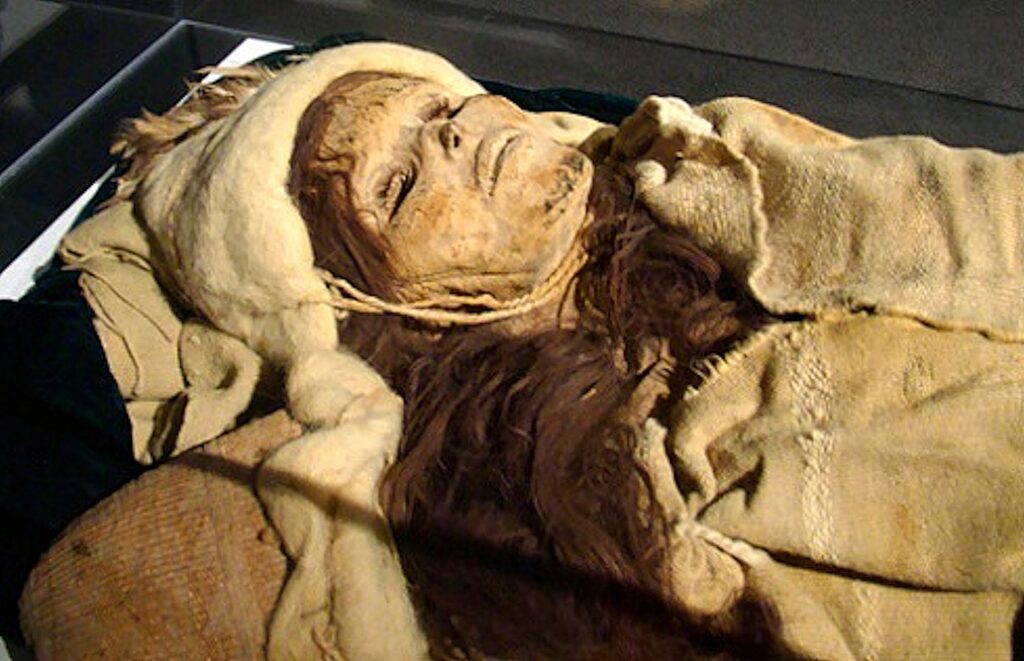In the arid deserts of western China, archaeologists have uncovered mummies dating back around 3,800 years, remarkably well-preserved thanks to the region’s dry climate. What makes these mummies especially intriguing is not just their exceptional preservation but also their distinct physical features—fair skin, light hair, and sharp facial traits—sparking debates and theories about ancient migrations.
1. Harsh Environment and Remarkable Preservation
These mummies were found in burial sites in the Tarim Basin, a region known for its harsh desert conditions. It is precisely the dry climate that helped preserve not only the mummies but also their clothing and accompanying artifacts. Woolen garments, along with items like woven baskets and leather shoes, have helped researchers reconstruct a part of the ancient cultures in this area. The mummies have been so well-preserved due to the low humidity and absence of bacteria, which has kept them intact for millennia.
2. Controversial Features: Ancient Europeans in China?
What makes these mummies particularly captivating is their physical appearance. Most of them exhibit fair skin, blonde or red hair, and sharp facial features, which are quite different from those of ancient Chinese people. These traits have led to a range of theories and debates about their origins.
One popular theory is that these individuals may have been of European descent, part of a migration from the Middle East or Europe, traveling through the Altai Mountains into what is now China. Researchers have pointed out that the features of these mummies closely resemble those of ancient Europeans, and their presence in this region could be evidence of long-distance migration from the West to the East, much earlier than previously thought.

3. Migration and Ancient Cultural Connections
These theories open up an intriguing question about the possibility of migration and cultural exchanges between ancient civilizations. Contrary to traditional beliefs about isolation between ancient cultures, this discovery could be evidence of early connections between Europe, Central Asia, and East Asia.
Archaeologists also note that the Tarim Basin was once an important trade hub, where merchants passed between the East and the West. The movement of people between cultures may have occurred far earlier than current research suggests. The discovery of these mummies broadens our understanding of human migration and cultural exchange in the ancient world.
4. Open Questions and Future Research
Although the theories of migration from the West to China are compelling, many questions remain unanswered. Scientists will need to conduct further studies, including DNA analysis and examination of cultural artifacts, to determine the exact origins and connections of these people. This discovery will undoubtedly continue to be a fascinating research topic, potentially altering our understanding of ancient migration patterns.
In the future, exploring the links and influences between ancient cultures could change the way we view human history, opening a new chapter in archaeological and migration studies.
With these findings, we not only gain a deeper understanding of the past in one particular region but also uncover profound connections between ancient civilizations that were once thought to be impossible. The mysteries surrounding migration and cultural interaction will undoubtedly remain a captivating subject for researchers for many years to come.
